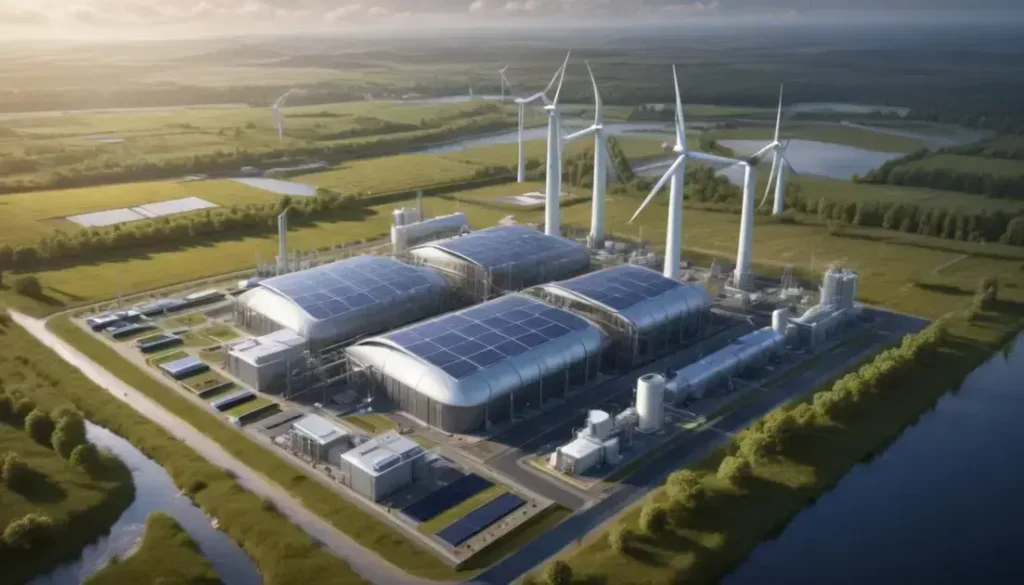Carbon removal technologies, especially Direct Air Capture (DAC), enable Canadian businesses to reduce atmospheric CO2 levels while enhancing sustainability, benefiting from regulatory support and new economic opportunities.
Carbon removal technologies, particularly Direct Air Capture (DAC), are rapidly evolving, influencing how businesses operate and engage with environmental regulations in Canada. Curious about its potential?
Overview of Carbon Removal Technologies
Carbon removal technologies are at the forefront of addressing climate change by reducing atmospheric carbon dioxide levels. One of the most notable methods is Direct Air Capture (DAC), which involves capturing CO2 directly from the air using advanced chemical processes. This technology is gaining traction as it offers a scalable solution for emissions reduction.
Additional Techniques: Besides DAC, other approaches include bioenergy with carbon capture and storage (BECCS) and ocean-based solutions. BECCS combines biomass energy production with carbon sequestration, effectively removing carbon while generating energy. Ocean solutions focus on enhancing natural processes, like algal blooms, that naturally absorb carbon.
Implementing these technologies poses several challenges, including high operational costs and the need for significant energy inputs. However, advancements in innovation and government incentives can help mitigate these barriers. As the push for sustainable practices grows, these innovations are vital in helping both Canadian businesses and the global community meet their carbon neutrality targets.
Economic Impact of DAC Agreements on Canadian Firms
The economic impact of Direct Air Capture (DAC) agreements is significant for Canadian firms. As these technologies evolve, they present new opportunities for businesses to invest in sustainable practices that could enhance their market competitiveness. Companies adopting DAC can improve their corporate sustainability profiles and meet regulatory requirements more effectively.
Moreover, DAC agreements often involve government incentives, making initial investments more manageable. These financial support structures encourage firms to explore carbon removal as a viable business strategy. By participating in these agreements, companies can open doors to new revenue streams through carbon credits and export opportunities.
Additionally, the collaboration among industries plays a crucial role in amplifying the economic benefits. Partnerships between technology providers and Canadian firms can facilitate knowledge sharing and innovation, leading to more efficient carbon capture systems. As the demand for sustainability increases, firms that leverage DAC partnerships will find themselves at an advantage in the marketplace.
In conclusion, Direct Air Capture (DAC) technologies represent a promising avenue for Canadian firms aiming to enhance their sustainability efforts. By investing in these innovative solutions, businesses can not only comply with environmental regulations but also gain a competitive edge in the market.
As DAC becomes more widely adopted, firms can benefit from financial incentives and new revenue opportunities through carbon credits. Collaboration and partnerships will further amplify these economic benefits, fostering progress and innovation in the industry.
Ultimately, embracing DAC can lead to a more sustainable future for businesses and contribute to reducing greenhouse gas emissions, shaping a cleaner environment for upcoming generations.
Frequently Asked Questions
What is Direct Air Capture (DAC)?
Direct Air Capture (DAC) is a technology that removes carbon dioxide directly from the atmosphere using chemical processes, helping to combat climate change.
How can Canadian businesses benefit from DAC technologies?
Canadian businesses can enhance their sustainability profiles, comply with regulations, and explore new revenue streams such as carbon credits by adopting DAC technologies.
What economic opportunities do DAC agreements offer?
DAC agreements often involve government incentives, making investments more feasible and opening doors to new market opportunities and partnerships.
Why is collaboration important for DAC implementation?
Collaboration among industries encourages innovation, knowledge sharing, and the development of more efficient carbon capture systems, amplifying the economic impact of DAC.
Are there financial incentives for businesses adopting DAC?
Yes, many governments provide financial incentives and support to encourage businesses to invest in carbon removal technologies like DAC.
What is the environmental impact of using DAC technologies?
Using DAC technologies significantly reduces atmospheric carbon dioxide levels, contributing to climate change mitigation and aligning with sustainability goals.


